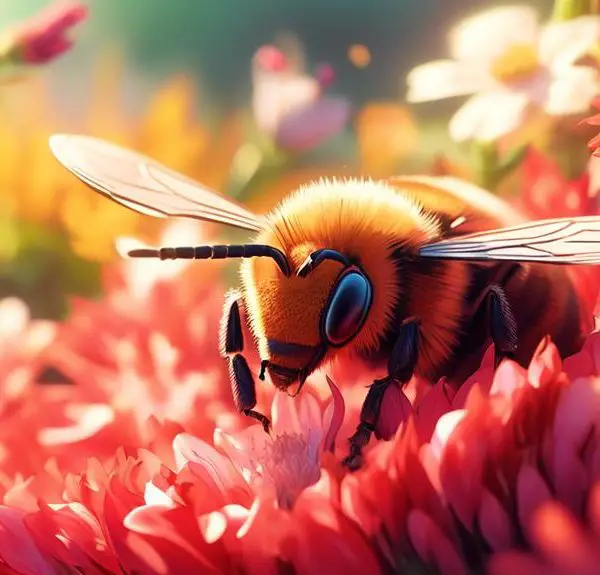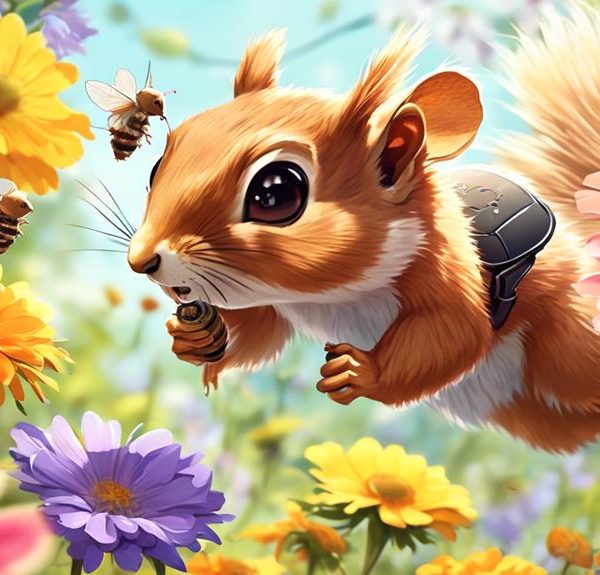Glimpse into the fascinating world of spiders and mason bees, and unravel the intricate dynamics of their shared ecosystem.
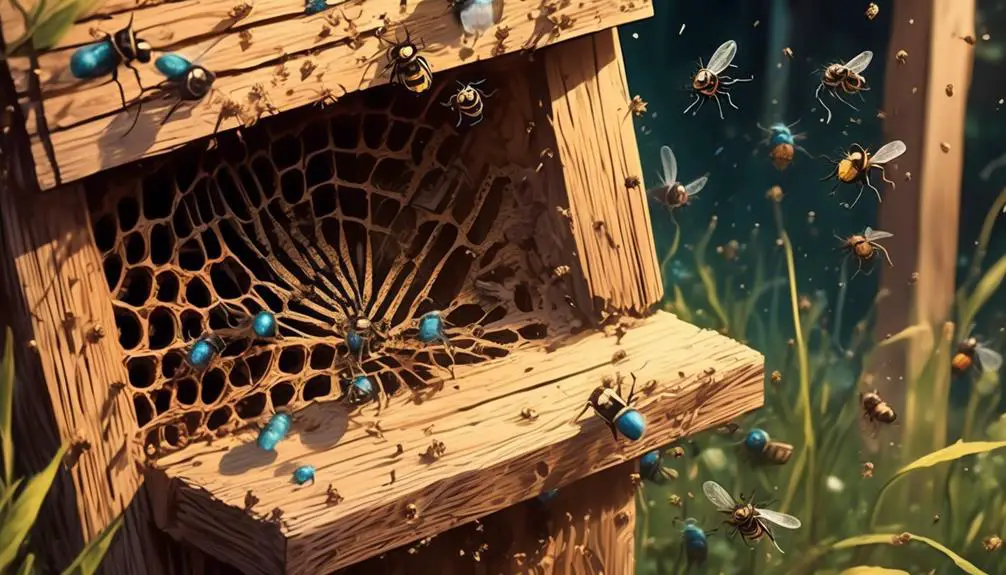
Do Spiders Eat Mason Bees?
Have you ever gazed into the intricate web of a spider and wondered about its dietary habits? You're about to unravel a piece of this eight-legged enigma, exploring whether it includes mason bees on its menu.
Mason bees, these industrious and eco-friendly pollinators, coexist in the same ecosystems with spiders. But, do they fall prey to these calculating hunters? While the answer might not be straightforward, it's certain that the interaction between these species is a crucial part of the ecological balance.
So, let's embark on this intriguing journey, as we explore this facet of nature's complex food web.
Key Takeaways
- Spiders are carnivores and mason bees can become prey if caught in their webs.
- Mason bees are agile fliers and can evade spider webs, but they can still be targeted by spiders.
- Mason bees have a sting that can deter smaller spiders.
- Changes in spider populations can have implications for mason bee populations and ecosystem balance.
Understanding Spider Diets

To fully comprehend the diverse diet of spiders, you'll need to delve into the fascinating world of arachnid gastronomy, where insects, small mammals, and even other spiders are often on the menu. Spiders are primarily carnivores, with their food choices largely dictated by their size, species, and habitat. They're also opportunistic feeders, eating whatever they can catch and subdue.
You'd be surprised to learn that spiders consume approximately 400-800 million tons of prey annually, which underscores their pivotal role in maintaining ecological balance. In terms of specific diet, orb-weaving spiders, for instance, predominantly feed on flying insects caught in their intricate webs. Jumping spiders, on the other hand, are active hunters, preying on smaller insects like aphids and grasshoppers.
And what about mason bees? While spiders don't specifically target these bees, they won't pass up the opportunity if it presents itself. However, the mason bee's robust size and quick flight speed make them a challenging catch for most spiders. So, while these bees aren't a staple in a spider's diet, they can occasionally become an unexpected treat.
Mason Bees: A Brief Overview

Often overlooked, mason bees are remarkable creatures that play a crucial role in our ecosystem, particularly in pollination. Unlike the well-known honeybee, mason bees are solitary insects. They don't live in colonies, nor do they produce honey or beeswax. However, they're superb pollinators, outperforming their more famous cousins by a wide margin.
Mason bees are named for their unique nesting habits. They use mud or clay, like masons, to build their nests. They're also non-aggressive insects, only stinging when threatened or trapped.
You'll often find them in North America, Europe, and Asia. They're prevalent during the spring, and they're known to pollinate a variety of plants, including fruits, vegetables, and flowers.
Mason bees are invaluable to our environment, boosting food production and promoting biodiversity. They're, however, under threat from habitat loss, pesticides, and climate change. You can help protect them by setting up bee-friendly spaces in your garden, like bee houses and mud patches.
Understanding the biology and behavior of mason bees is key to protecting them and, by extension, our ecosystems. Doing so isn't just a matter of environmental stewardship; it's a step towards ensuring the future of our food supply.
Interactions Between Spiders and Bees

While understanding mason bees' biology and behavior is crucial, it's equally enlightening to investigate their interactions with other species, particularly spiders. You might think that these two creatures would avoid each other, but the reality is more complex.
Spiders are opportunistic predators, and while they don't specifically target mason bees, they'll certainly take advantage if an opportunity arises. A spider's web is a danger zone for any insect, and mason bees are no exception. When a mason bee becomes entangled in a web, it's often the spider's next meal.
However, mason bees have a few tricks up their sleeves. They're agile fliers and can often evade a spider's web. Moreover, their sting can deter smaller spiders, creating a natural barrier of defense.
In turn, spiders also influence mason bee populations. They help control the number of bees, ensuring a balance in the ecosystem. Without spiders, mason bees could potentially overpopulate and disrupt the ecological equilibrium.
In essence, the relationship between mason bees and spiders is one of predator and prey. Yet, it's a delicate balance that maintains biodiversity and ecological stability. It's a fascinating example of the intricate web of relationships in nature.
Case Study: Spiders Vs Mason Bees
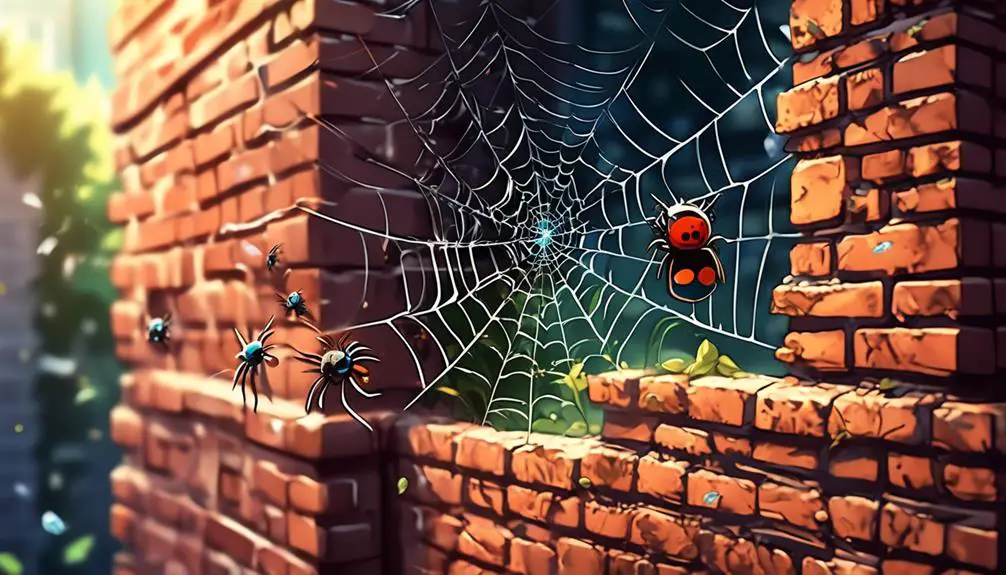
Let's delve into a specific case study that explores the intricate dance of survival between spiders and mason bees in a real-world scenario. The setting for this drama is a typical backyard garden, home to both species. You'd find mason bees buzzing around, busily collecting pollen and nectar, while spiders are strategically positioned, waiting to pounce.
In this particular study, researchers observed a type of crab spider, Misumena vatia, known to prey on bees. They noticed how these spiders would position themselves on flowers, perfectly camouflaged, waiting for unsuspecting mason bees.
The battle tactics are fascinating. The spider doesn't chase; instead, it patiently waits until a bee is within striking distance. It then quickly immobilizes the bee with a venomous bite.
However, mason bees aren't defenseless. They've evolved an early warning system: the ability to detect the UV light reflected off the spider's body. When a bee spots this signal, it quickly alters its flight path to avoid the predator.
This case study provides a glimpse into the complex, ever-evolving struggle for survival between spiders and mason bees. It underscores the intricate balance of nature, where each species employs unique strategies to survive.
Implications for Ecosystem Balance
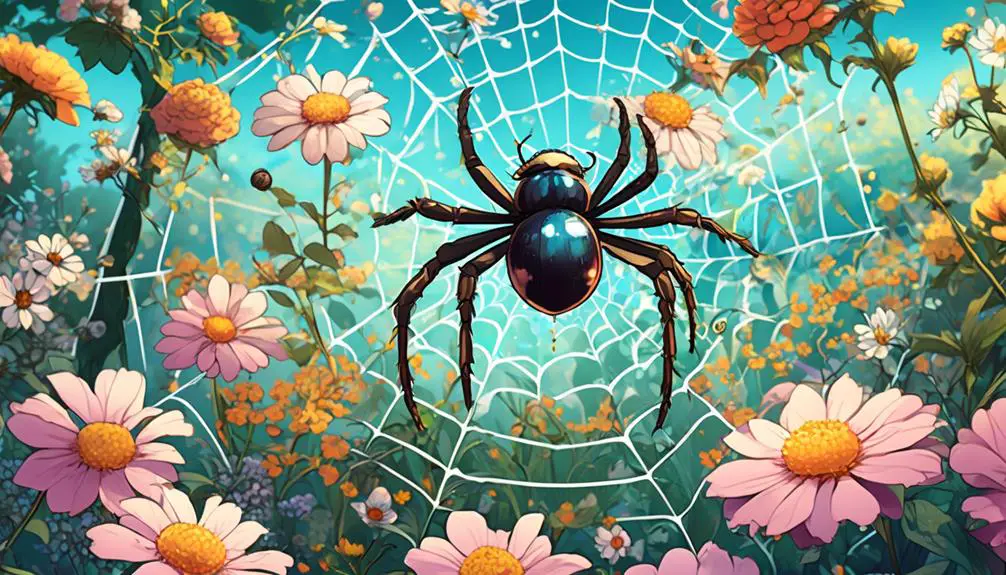
Understanding this survival dance between spiders and mason bees is crucial, as it illuminates the profound impact such interactions have on the overall balance of our ecosystems.
You see, these two creatures are integral players in a delicate web of life, and their interactions can have cascading effects.
Mason bees, as pollinators, are vital for plant reproduction. They transfer pollen from male to female flower parts, facilitating the production of fruits and seeds.
Spiders, on the other hand, are important predators keeping insect populations in check. If spider populations dwindle, mason bees may multiply unchecked, leading to potential over-pollination. Conversely, a surge in spider numbers could reduce mason bee populations, risking insufficient pollination.
Furthermore, spiders' diet isn't limited to mason bees. They're part of a more extensive food web, preying and being preyed upon. Changes in spider populations can ripple across this web, impacting other species and potentially disrupting ecosystems.
Conclusion
So, do spiders eat mason bees? Yes, they can. Spiders are opportunistic predators and their diverse diets often include bees.
Yet, the frequency and impact of these interactions are largely dependent on environmental conditions. This predator-prey relationship is vital, maintaining a balance in our ecosystem.
However, it's crucial we continue to study and understand this interaction in order to protect and preserve these species in their respective habitats.

